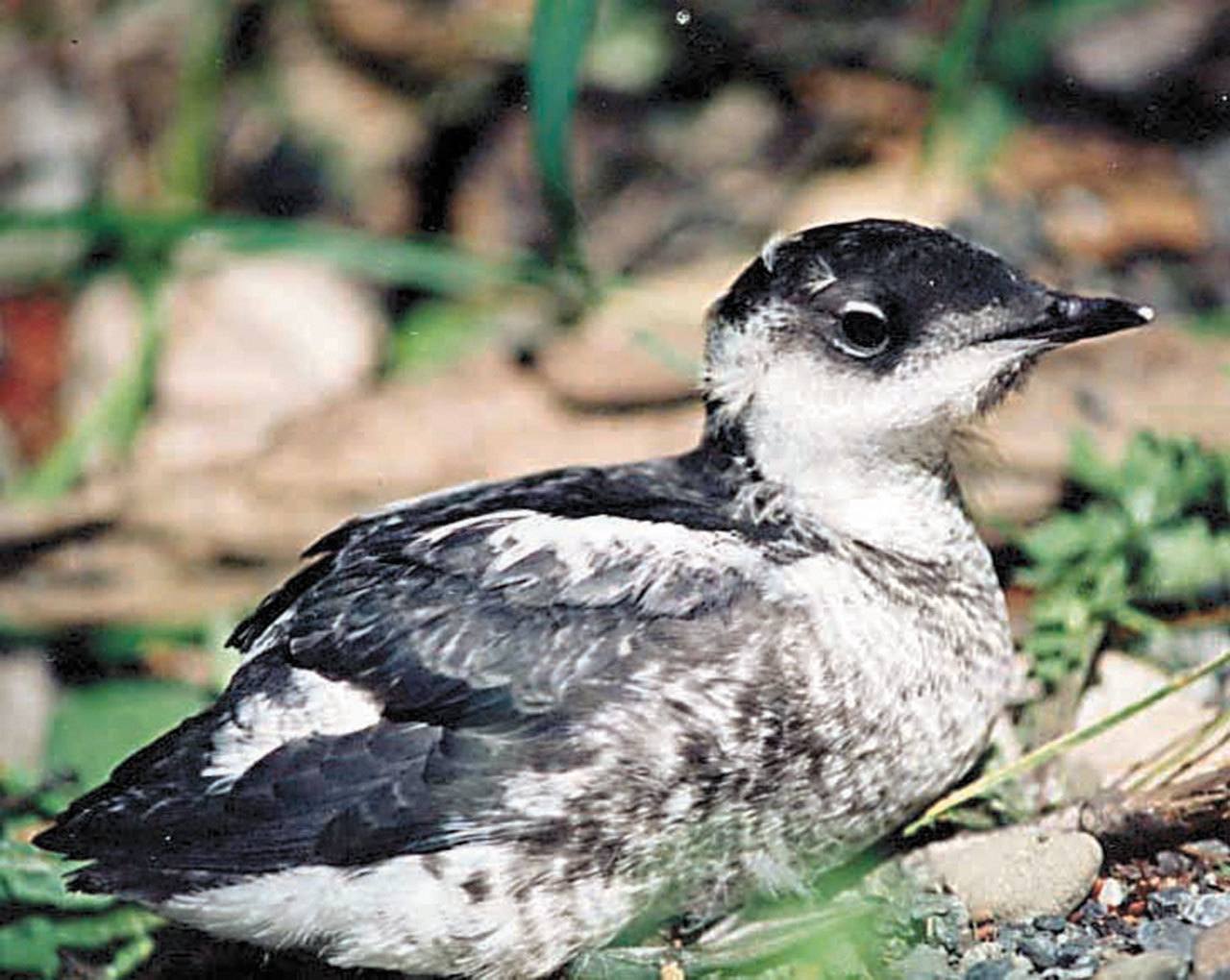PORT ANGELES — Proposed protections for the marbled murrelet on state-managed forests would have a “minimal impact” on harvest volumes in Clallam County, Commissioner Bill Peach reported last week.
Peach also serves on the state Board of Natural Resources, which sets policies that guide how the state Department of Natural Resources manages forest lands and other resources.
The DNR board is considering six alternatives in a long-term conservation strategy for the marbled murrelet, a seabird that nests in coastal forests. It is listed as threatened under the federal Endangered Species Act and by the state Department of Fish and Wildlife.
“Here’s the bottom line with regard to the murrelet: Of all of the options being considered for the management of murrelet, they have minimal impact on Clallam County,” said Peach, a retired Rayonier regional manager, during the county commissioners’ meeting Tuesday.
“First time I’ve seen that in my entire career. But if you stop and think about it, the reason is there’s been a lot of work done already in Clallam County to protect the [northern spotted] owl. And so if you take a look at owl and murrelet behind that, there is already protection, as long as they count the same habitat for those species.”
Peach cited a DNR report comparing harvest volumes of the various scenarios in the marbled murrelet long-term conservation strategy.
Each of the options would result in a modest increase in harvest volume on the North Olympic Peninsula’s state forest transfer lands.
The “no change” option would leave an annual harvest volume of 35.5 million board feet in Clallam County and 4.7 million board feet in Jefferson County, the report says.
The five alternatives would result in annual harvest volumes ranging from 36.2 million board feet to 41.8 million board feet in Clallam County and 4.9 million board feet in Jefferson County.
Other counties, such as Snohomish, Skagit and Lewis, would see less harvest volume under the more restrictive options in the draft marbled murrelet conservation plan.
Under the no-change scenario for marbled murrelet protection, the statewide harvest volume would be 464 million board feet per year.
Option B, which offers the least protection for the small seabird, would result in an annual harvest volume of 498 million board feet.
Option F, which offers the most protection for the murrelet, would leave 400 million board feet of available timber.
The cumulative value of the timber is between $4.3 billion and $5.2 billion, depending on which option is selected, DNR officials said.
Revenue from timber sales on state-managed trust lands supports timber counties and junior taxing districts such as schools, hospitals, libraries and fire departments.
Peach had requested a county-by-county breakdown of the effect of the murrelet alternatives on harvest volumes.
DNR Deputy Supervisor for State Uplands Kyle Blum prepared the analysis for the board’s Sept. 6 meeting in Olympia.
The report is available on the DNR website, www.dnr.wa.gov, under “About,” “Boards and Councils” and “Board of Natural Resources.”
“The previous scenarios were for comparative purposes only,” Blum concluded in the report.
“Those numbers should only be viewed in the context of this exercise, as further choices around the Sustainable Harvest Calculation will influence final volume levels.”
The six-member Board of Natural Resources, which normally meets once a month, will hold special meetings every other week through October to deal with three specific issues, Peach said.
The first step will be to select an option for the marbled murrelet.
“The second will be to answer the question how should we deal with arrearage,” Peach said.
“That is the variance between what was authorized [for sale] and actually occurred.”
Recession-era staff reductions and environmental protections were the main reasons why DNR failed to sell 92 million board feet of Clallam County timber that was supposed to be sold from 2005 to 2014, officials have said.
“And then, finally, there will be a conversation about the assumptions that should be in the model for harvest of riparian zones,” Peach said.
Riparian zones are areas around streams and rivers.
DNR manages about 93,000 acres of timberland on behalf of Clallam County and junior taxing districts.
________
Reporter Rob Ollikainen can be reached at 360-452-2345, ext. 56450, or at rollikainen@peninsuladailynews.com.

